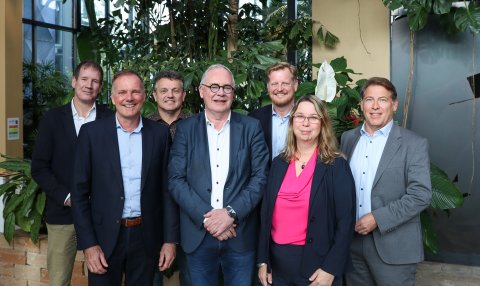
Reactive vs. proactive maintenance
When talking about maintenance as part of daily building operations, most people immediately think of a long list of activities that need to be executed on certain days within a certain time period. Usually this is visualised on a resource planning board. But when we consider today’s requirements the above process only covers a third of what efficient and modern maintenance should. And planned maintenance itself can also lead to higher costs from unnecessary activities.
Including proactive planned maintenance within your maintenance strategy is already far better than having only reactive maintenance. This one change can reduce the cost of maintenance by approximately 75%. However, this is still up to five times more expensive than doing condition-based maintenance, where each technical asset is remotely monitored and kept operating in a predefined condition. Usually, this monitoring is done through BMS information or even with IoT-based sensors. State of the art software products such as Planon Asset & Maintenance Management allow facility managers to integrate IoT with asset and maintenance management activities to optimise building operations based on in-use parameters.
Taking maintenance to the next level
If we are already thinking about using IoT and all its capabilities to keep technical equipment in shape, why don’t we also take the entire maintenance process to the next level. In this case, condition-based monitoring of an asset is only half the solution. Ideally, maintenance is treated as part of a full asset life-cycle management strategy.
Asset life-cycle management involves the coordinated and optimised planning, asset selection, acquisition, implementation, utilisation, care (maintenance) and ultimate disposal or renewal of the appropriate assets and asset systems. A well-known international standard for this is the ISO 55000 family of standards for asset management systems. These standards outline an approach to performing asset management in accordance with organisational real estate and maintenance objectives.
Among asset and maintenance experts, asset life-cycle management is often talked about within the context of objective-based maintenance. In addition to managing asset performance and preventing failures, these experts consider meeting regulatory compliance an important part of their planning. This is a key component of objective-based maintenance. What good is it if the asset performance is optimised, but it no longer fulfils health and safety or indoor air quality requirements?
Objective-based maintenance will have an impact on real estate decisions as well. For example, why should an asset or system be replaced in a building that will be sold in the short-term? If replacing the existing system will result in a significantly higher sales price, then the decision can be taken to invest now to achieve the higher price objective. To fully understand the potential value of an objective-based maintenance strategy, it is important to engage with the real estate department and get the maintenance and real estate strategy aligned.
Balance sustainability with cost
Sustainability objectives are gaining in importance when organisations think about their asset maintenance strategy. The increasing awareness of the impact of climate change and the legal obligations to run companies more sustainably are having a significant influence on how maintenance is executed. Even though the monitored asset may operate in the best condition, adjusting its operating parameters or cleaning parts earlier might reduce its carbon emissions.
While executing maintenance activities earlier than necessary might increase operating costs, the positive effect on carbon emissions and the associated energy cost savings often lead to a positive balance. Additionally, using IoT-captured data to compare technical conditions, energy consumption and building utilisation can massively help to understand the impacts of maintenance decisions.
Score a maintenance win with an integrated solution
Asset and maintenance experts require modern IT systems to manage their complex daily operations. These systems should include an asset and maintenance module, in addition to offering deep integration with IoT, real estate, and sustainability management solutions. Maintenance is more than just scheduling and reacting - now is the time for a proactive, objective-based maintenance strategy!
If you would like to know more about the benefits of objective-based maintenance for your organisation, please contact us!





















